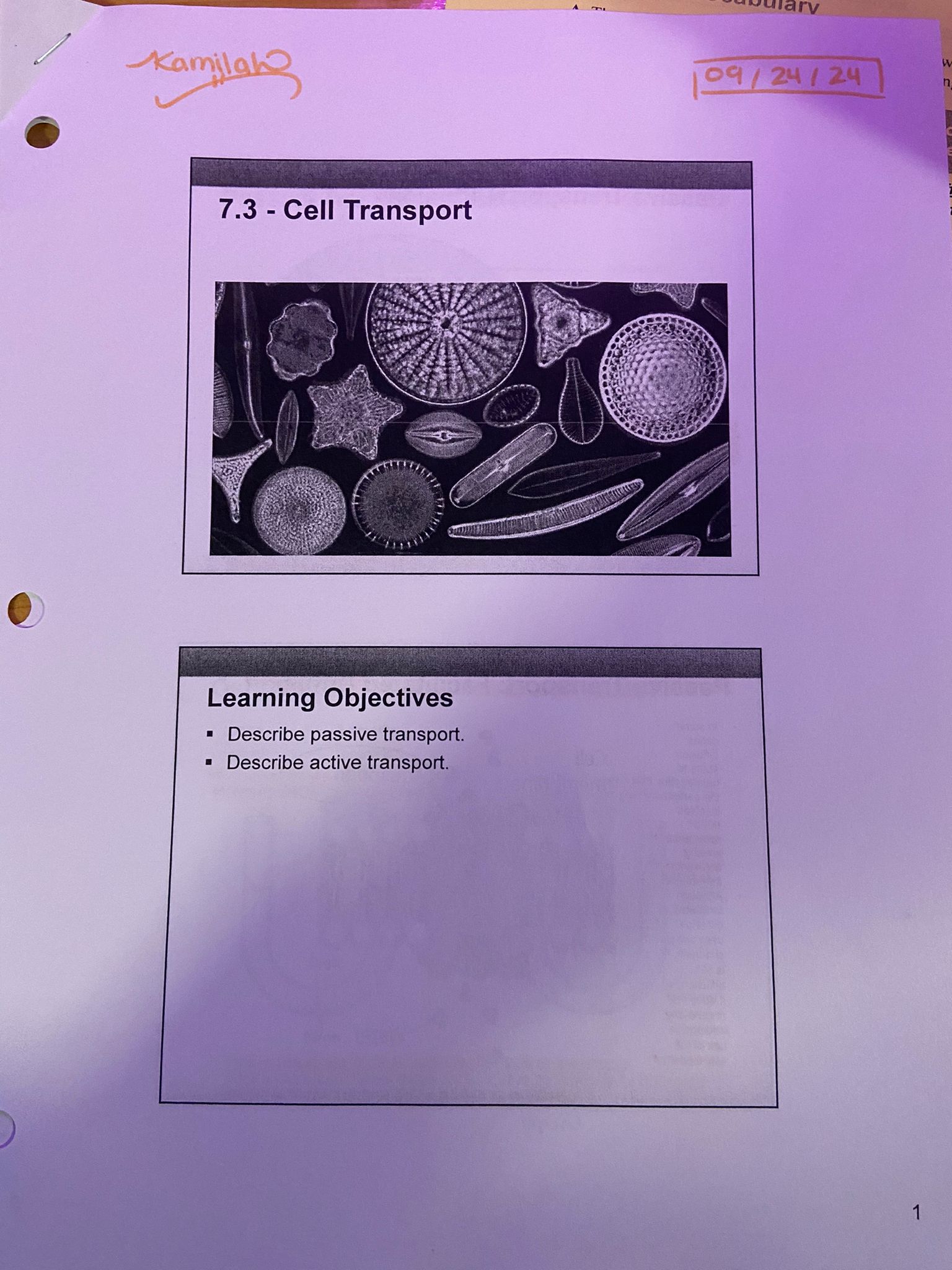Describe passive transport and describe active transport.

Understand the Problem
The document presents a section on cell transport, outlining learning objectives that include describing passive and active transport mechanisms.
Answer
Passive transport involves the movement of molecules from higher to lower concentration without energy. Active transport involves the movement of molecules from lower to higher concentration with energy.
Passive transport is the movement of molecules from a region of higher concentration to a region of lower concentration without the use of energy. Active transport is the movement of molecules from a region of lower concentration to a region of higher concentration with the use of energy, typically in the form of ATP.
Answer for screen readers
Passive transport is the movement of molecules from a region of higher concentration to a region of lower concentration without the use of energy. Active transport is the movement of molecules from a region of lower concentration to a region of higher concentration with the use of energy, typically in the form of ATP.
More Information
Passive transport includes processes like diffusion, osmosis, and facilitated diffusion, while active transport includes processes like endocytosis, exocytosis, and sodium-potassium pumps.
Tips
A common mistake is confusing the direction of molecule movement with the type of transport. Remember, passive transport goes with the concentration gradient and does not require energy, whereas active transport goes against the concentration gradient and requires energy.
Sources
- Passive transport and active transport across a cell membrane article - khanacademy.org
- Difference Between Active Transport and Passive Transport - BYJU'S - byjus.com
- Defining Active and Passive Transport - ThoughtCo - thoughtco.com
AI-generated content may contain errors. Please verify critical information